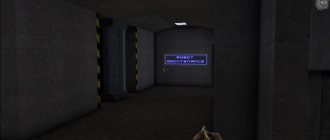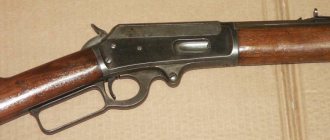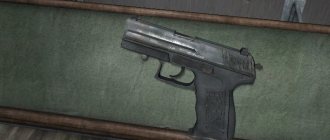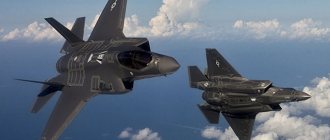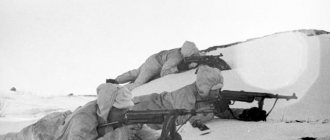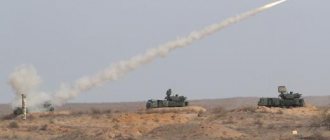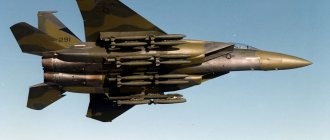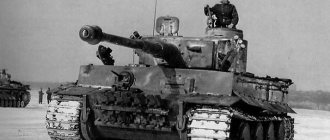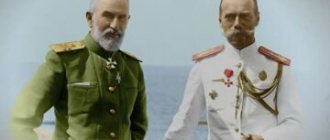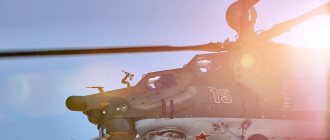The history of the GHA-9 unit dates back to 1972, when Palestinian terrorists from the Black September organization captured athletes of the Israeli Olympic team and fans arriving at the Olympic Games in Munich.
To free the hostages and neutralize the terrorists, who demanded to provide them with a helicopter, regular units of the West German police were used, whose employees had never participated in such operations before and did not have the appropriate training and necessary equipment. On an open section of the concrete runway at Fürstenfeld Airport, police from the state of Bavaria attempted to storm a helicopter provided by well-trained, fanatically devoted terrorists who were ready for anything. The result of this action was more than sad: immediately after the start of the assault, the Palestinians detonated a mine they had brought with them. Everyone died: the hostages, the helicopter crew and the terrorists.
The terrorist attack at the Olympic Games in Munich dealt a crushing blow to Germany's prestige. The question arose of creating a special unit capable of professionally solving specific problems in the fight against terrorism.
The command of the West German armed forces proposed forming a similar unit at its base. However, this option was rejected by the German government: an army special unit focused on possible forceful actions against its own population would be very reminiscent of the SS units of the evil memory of the Second World War.
Given this circumstance, the German Minister of Internal Affairs of that time, Hans-Dietrich Genscher, was entrusted with forming a special group to combat terrorism within the structure of the Federal Border Police.
On September 26, 1972, D. Genscher signed a decree on the creation of a special forces group to combat terrorist organizations. It was formed on the basis of the Federal Border Guard and was named GHA-9 - “9th Federal Border Police Detachment” (Bundesgrenzschutz, GSG-9). Initially, it included 180 border police personnel.
The first commander and actual creator of the GHA-9 was Colonel Ulrich K. Wegener, who had previously served for 15 years in the Federal Border Police. Wegener carefully studied the experience of creating and using special forces in the USA, Great Britain and Israel. As a working model for creating an anti-terrorism unit in Germany, he chose the structure of the elite reconnaissance unit “Sayret Matkal” of the General Staff of the Israeli Defense Forces.
For two years, Wegener was involved in recruiting personnel, drawing up special programs and developing new training and education systems that would help create truly powerful weapons in the fight against terrorism. Wegener would later become the first commander of the young special forces unit. It should be mentioned that at one time he completed an internship in similar units in other countries, in particular, in the British SAS, in the American Delta, in the Israeli Sayret Matkal, which allowed him, based on the experience of these units, by the spring of 1973 year to form a unit of high-class specialists, and a year later, after a number of selections and training, GHA-9 was ready for real action.
It was then that the main task of the GHA-9 was determined - to counter terrorist organizations (and at that time the German RAF was gaining momentum) and lone terrorists; preventing assassination attempts on foreign diplomats and officials, protecting government facilities and representatives. In addition, GHA-9 is designed to suppress especially dangerous and serious crimes related to murder, hostage-taking, robbery and robbery, as well as extortion on a particularly large scale. The group’s charter also contains the following clause: “protection of the Constitution and its interests,” which in fact means the action of the GHA-9 in places of increased danger, when the land police are powerless and incompetent (the Federal Republic of Germany is a union of 15 states that have their own parliaments and governments and police authorities). It is significant that the use of task forces for “local” interests is the responsibility of those land authorities who request assistance, and not the federal government. Nevertheless, issues of tactical use and the choice of methods for carrying out specific actions always remain the prerogative of the special group commander.
True, there are three people who have the right to give orders along with the commander. This is the Minister of the Interior of Germany, the head of the police department of this ministry and the commander of the border guard. The detachment commander is connected to each of them by a direct line of communication, protected from eavesdropping.
In total, GHA-9 employees carried out more than 5,000 various anti-terrorist operations: releasing hostages, arresting terrorists from the “red brigades,” ensuring the security of public events. One of the most famous actions of the GHA-9 is the release of more than 100 hostages, passengers of an airplane seized by Palestinian terrorists at the Mogadishu airport (Somalia) in 1977. Members of the special group also visited Iraq, where in 2004 they were engaged in protecting employees of the German embassy.
STRUCTURE OF GHA-9
The organizational and staffing structure of the GHA-9 is a well-thought-out system that includes closely interconnected combat and support units. The commander manages the personnel of GHA-9 through the control body - the operational leadership headquarters. Subordinate to him are four operational detachments and three support detachments: technical, information and training, as well as services: supply, repair, sanitary and advanced training.
The core of the special forces consists of operational detachments. Each special squad includes a control group and six special operational groups of 5 people each.
GHA-9 is based in a special military town near Bonn - St. Augustine. All conditions for training and practicing specific actions have been created there. In addition to the training ground, there is a swimming pool, a forest area for practicing operations in the forest, a helipad, etc.
GHA-9 has the following structure: headquarters, four operational detachments, four support units (supply detachment, engineering and technical detachment, communications and documentation detachment, training detachment), as well as services: supply, repair, sanitary and advanced training, as well as a squadron helicopters "Alouette" and "Puma" (pilots and mechanics). The headquarters consists of a commander, a senior operations officer, a psychologist, a doctor and other specialists. But the main composition is operational detachments of 30 people each, which are divided into control sections and five CAT (Speziale-insatztruppe) assault groups, five people per group.
All employees of the GHA-9 special forces undergo the same basic training and are trained to act in any situation. However, each special squad has a clear specialization. The first and fourth special squads are designed to conduct reconnaissance, search and surveillance of persons posing a potential danger. These detachments are staffed by GHA-9 employees who have completed advanced training courses and trained in methods of conducting external surveillance using special technical means for these purposes. For employees of this unit, the optimal age ratio is considered to be: 25% - under 25 years old, 25% - over 35 years old. Experience has shown that serving in these special forces requires people who are extremely active and flexible, capable of independently making quick and correct decisions in critical situations.
The second special squad is designed to act against terrorists who hijack sea vessels. The idea of creating a naval unit within the GHA-9 appeared in the early 80s. Uwe Dehe, then commander of GHA-9, wrote: “We established business contacts with naval units in the US intelligence services and came to the conclusion that we simply needed such a unit.” And it was created in 1983.
Members of the naval special detachment received their baptism of fire in 1985, when they took part in the release of 427 hostages and 80 crew members of the cruise ship Achille Lauro, which was captured by supporters of the Palestine Liberation Organization. After this operation, carried out by the naval special squad GHA-9, similar units were created in the anti-terrorist forces of Great Britain, Norway and Italy.
Members of the third special detachment have the highest qualifications as paratroopers. The first five paratroopers were trained by American instructors. Subsequently, parachute training for GHA-9 employees was carried out at the Bundeswehr Airborne Forces School in Altenstadt. The training process lasts four weeks. In 1984, a special detachment of paratroopers was officially registered as one of the GHA-9 units.
Gallery[edit]
- On the left is Dietmar Pohl, a famous German specialist in edged weapons; on the right is GSG-9 founder Ulrich Wegener.
- The Puma White Hunter is a favorite GSG-9 knife.
- First assault group GSG-9. On the left is Lieutenant Colonel Ulrich Wegener. The soldiers are armed with HK MP5 and Remington 870.
- Shooter with HK G36.
- Sniper with a HK PSG-1 rifle.
- Assault group GSG-9.
- Discussion of the action plan.
- Practicing assault operations.
- Assault group with HK G36.
- Shooter with HK G36.
- GSG-9 in the television show Deadliest Warrior.
- GSG-9 fighter with a SIG Sauer P226 pistol.
EQUIPMENT AND TRAINING GHA-9
In total, about 300 people serve in GHA-9. The average age of GHA-9 employees is 28 years.
Recruitment is carried out exclusively on a voluntary basis from among the Federal Border Police servicemen who have served for at least two and a half years. All candidates (private, non-commissioned officers and officers) who have expressed a desire to serve in the GHA-9 undergo an in-depth medical commission, a four-hour test to check the psychological state, a general educational test and a physical fitness exam, during which the physical endurance of the candidates is revealed, as well as their abilities and skills in firing from all types of standard small arms. As a rule, at this stage more than 60% of the total number of candidates are eliminated.
This is followed by the training phase, which lasts five months. A characteristic feature of this stage is the fact that work is carried out with each cadet individually, that is, a single fighter is being trained. At the end of this stage, there is again a series of tests and exams in the following disciplines: hand-to-hand combat (karate and jiu-jitsu), general physical training (forced march, cross-country cross-country, swimming, scuba diving, mountaineering, parachute training), criminology and law . A special place in this list is given, of course, to fire training. For special forces, a particularly important indicator is shooting results and the ability to wield several types of weapons, which is why future specialists are trained in almost all types of fire training; they are taught to fire from helicopters, cars, from train cars, under enemy fire, from the roofs of buildings and structures, in water, from behind, etc. For every three hours of daytime shooting, there is one hour of nighttime shooting.
A special course in the psychology of terrorism helps students understand in detail the specifics of behavior, relationships and motivation for the actions of members of extremist groups. An important subject in this regard is the study of tactics of psychological influence on terrorists in a specific operational environment. Lectures alternate with practical classes in which variants of such influence are “played out” depending on the situation. Situations, as a rule, are taken from life; fortunately, the activities of terrorist groups in our time have acquired a wide scope. So there is no shortage of “live” material. The course of basic training ends with an examination session. An unsatisfactory grade in at least one of the subjects means expulsion from the training squad. In practice, the number of “losers” at this stage is still about 10% of the total number of subjects.
For those who have passed all the previous stages with honor, there is a special three-month training course as part of assault groups and operational detachments. It is during this period that cadets learn to apply previously acquired knowledge and skills in practice. They are helped in this by experienced instructors and trainers who have completed internships in foreign intelligence services. Groups go to training grounds, where they simulate the seizure of a building or vehicle in which a gang of terrorists is holed up, the release of hostages, the pursuit of armed groups in wooded and swampy areas or in the mountains. Cadets are taught to act in an environment as close as possible to the real one, to work at full capacity. A lot of time is devoted to light diving, mountain rescue and parachute training, studying demolition, methods of providing medical care for various injuries and wounds. Special tactics of urban combat are studied, new strategies are jointly developed and new schemes are developed for a particular combat mission.
According to the GHA-9 command, functional interchangeability contributes to the high combat effectiveness and coherence of the fighters’ actions. Therefore, any of them must master as many specialties as possible: sniper, demolition worker, search dog handler, signalman, paramedic, driver, etc. Strictly speaking, all further service is subject to the same. This is from 50 to 70 hours of weekly combat training. The GHA-9 fighters shoot from morning to evening for two or three days, and shoot all night long. Moreover, fire training is carried out in a unique bunker (its cost is nine million dollars), which contains life-size models of airplanes, buses, ships, etc. Naturally, the models are equipped with many different devices that allow you to simulate any conceivable operation.
Soldiers also study foreign languages, since very often they have to negotiate with foreign terrorists in their native language. It goes without saying that in order to avoid ambiguities in such a dangerous matter, language training must be at its best.
The GHA-9 fighters are also familiar with flying, which includes both flying an airplane and a helicopter, as well as the duties of a mechanic and flying hang gliders.
In fact, the further training of special forces in GHA-9 is the training of professional actors: here they teach almost all types of professional behavior and ethics that may later be needed for introduction into a gangster environment or for playing the role of an outside observer - a waiter, a taxi driver, a steward, courier, etc.
Every year, GHA-9 employees are sent for internships to similar foreign units. All this helps the GHA-9 to successfully counter all terrorist and extremist groups within the country and abroad. Already about 50 countries have turned to specialists from the GHA-9 for help in forming and training their own special groups of a similar profile.
History of creation[edit]
In 1972, during the Olympic Games in Munich, the Palestinian terrorist organization Black September took the Israeli team hostage and demanded the release of a number of dangerous criminals from prisons in Germany and Israel. The liberation attempt ended in failure and the death of 11 athletes. The German authorities did not allow Israel to use its special forces to free the hostages, which by that time already had extensive experience in such operations, and Germany did not yet have its own similar units.
But already in 1973, Lieutenant Colonel Ulrich Wegener formed and trained a special unit, which soon became one of the best in its class. GSG-9 (Border Guard Group 9) is not a military unit, but a police unit, since according to German law the Bundeswehr is prohibited from using weapons on German territory.
WEAPONS, UNITS AND EQUIPMENT GHA-9
German special forces soldiers wear dark green or brown overalls and berets of the same color. Shoes - lightweight black sneakers, made to special order, which are particularly durable. GHA-9 fighters also use titanium body armor and titanium helmets with radio communication devices built into them. For special assignments, special forces members may also wear civilian clothing, depending on the situation.
The GHA-9 also uses the services of the well-known German company, whose armored vehicles with souped-up engines and electronic “stuffing” are in service with the special group. In addition, it has a whole fleet of jeeps, motorcycles, vans, minibuses, armored personnel carriers, and trikes. If necessary, in conditions of increased danger, a so-called radio-controlled microtank is used, which is capable of dismantling the rubble, knocking down the door, going up and down the stairs.
In addition to weapons, GHA-9 fighters also use reconnaissance equipment: night vision devices, listening devices, means of detection and protection from the effects of chemical, bacteriological and radiological weapons. The command of the special group pays special attention to radio technical support, as it believes that without reliable and eavesdropping-proof radio communications today it is impossible to complete even the simplest operational task.
The main type of weapon used in the GHA-9 is the traditional Glock and Heckler-Koch FP70 A1 pistols with an 18-round magazine, 9 mm caliber; submachine guns "Walter" MP-K with 32 rounds, caliber 9 mm and "Heckler-Koch" MP5 A2 with magazines for 10, 15 and 30 rounds, caliber 9 mm; sniper rifles "Mauser-66" with a night optical sight and PSG-1; the latest Heckler-Koch G11 assault rifles, caliber 4.7 mm, grenade launchers for firing grenades with tear and nerve gas, various explosive devices, automatic shotguns, etc. The weapons are supplied with optical sights of all types, night vision and tracking devices, infrared illumination devices, laser range finders, silencers.
